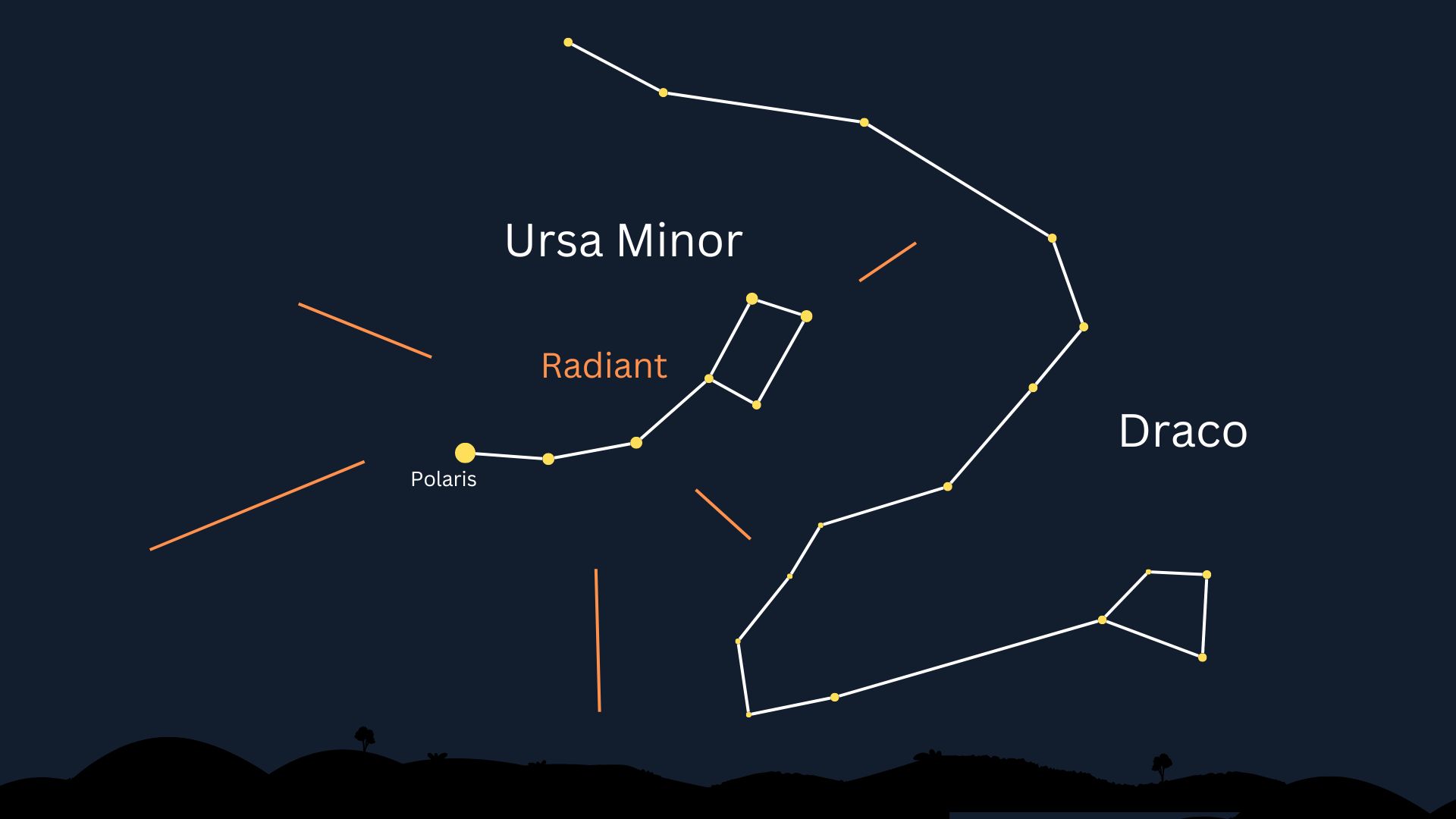See the Gamma Ursae Minorid meteor shower peak on Thursday (Jan. 19)
The meteor shower that appears to radiate from the constellation Ursa Minor last from Jan. 15 to Jan. 25 this year.

The annual Gamma-Ursae Minorid meteor shower peaks on Thursday (Jan.19), offering eagle-eyed skywatchers who are willing to brave the cold the opportunity to view meteorites through the night.
The shower, which this year is active between Jan. 15 and Jan. 25, will peak at 11:00 a.m. EST (1600 GMT) so the best time to spot meteors is in dark skies either before dawn or after dusk on Thursday.
The best time to view the meteors from any shower is when its radiant point is above the horizon. The radiant point of a meteor shower, or radiant, is the area of the sky from which the meteors appear to streak. The radiant of the Gamma-Ursae Minorid meteor shower is in the constellation of Ursa Minor, giving the shower its name.
Related: Meteor showers 2023: Where, when and how to see them
According to In the Sky, for observers in New York City, the radiant point of the Gamma-Ursae Minorid meteor shower is "circumpolar" meaning that from this position it never actually sinks below the horizon.
Not only are Gamma-Ursae Minorid meteors better seen when Ursa Minor, or the "little bear" best seen when the constellation is above the horizon, but the higher above the horizon the radiant point is the more visible meteorites are.

The radiant point of this meteor shower is the highest in the sky at around 7:00 a.m. EST (1200 GMT) but because meteors are easier to see with dark skies, an opportune time to view the Gamma-Ursae Minorids is just before dawn.
Get the Space.com Newsletter
Breaking space news, the latest updates on rocket launches, skywatching events and more!
This is when New York City will be turned towards the direction of the meteors as they enter Earth's atmosphere. This means the number of meteors that streak vertically down over Earth is at its maximum, in the process creating short trails near the radiant point.
When the radiant point isn't as high in the sky, the Gamma-Ursae Minorids will produce fewer meteors, but the meteors that can be seen at these times travel further through the atmosphere and produce longer, more horizontal streaks. This is because the meteors are longer-lived, thus covering more of the sky, taking longer to burn up in the atmosphere than those that streak vertically downwards through towards the planet.
Even at its peak, the Gamma-Ursae Minorid meteor shower isn't one of the flashiest of annual meteor showers, expected to produce just three meteors per hour in perfectly dark skies. The visibility of the peak of this shower on Thursday will get a boost from the fact the moon is close to its new moon phase and is thus almost completely dark with moonlight having little impact on visibility.

Want to get a good look at Ursa Minor? We recommend the Celestron Astro Fi 102 as the top pick in our best beginner's telescope guide.
Like all meteor showers, the Gamma-Ursae Minorids are created when the Earth passes through a cloud of debris left behind by a comet or asteroid as our planet progresses on its annual orbit of the sun. This means each meteor shower occurs around the same time each year.
The debris is ejected from comets or asteroids as they travel through their own orbit around the sun. When they make their close approach to the star radiation heats comets or asteroids causing them to vent solid material which lingers around the sun.
This debris that gives rise to the Gamma-Ursae Minorids enters the atmosphere of Earth at speeds of around 67,000 mph (108,000 km/h). The small grit-like pieces of debris burn up at an altitude of around 40 to 60 miles (70 to 100 kilometers) above the surface of the Earth.
If braving the bitterly cold nights of January to observe the Gamma-Ursae Minorids doesn't sound too appealing, one of the next major meteor showers over Earth is the Lyrids which according to the Greenwich Observatory kick off on April 14 and last until the final day of that month.
If you're hoping to observe the Gamma-Ursae Minorid meteor shower, our guides for the best binoculars could be a great place to start. For a look at Ursa Minor, don't miss our list of the best telescopes. If you're looking to snap photos of the night sky, check out our guide on how to photograph the moon, as well as our best cameras for astrophotography and best lenses for astrophotography.
Editor's Note: If you snap Gamma-Ursae Minorid meteors, and would like to share it with Space.com's readers, send your photo(s), comments, and your name and location to spacephotos@space.com.
Follow us on Twitter @Spacedotcom or on Facebook.
Join our Space Forums to keep talking space on the latest missions, night sky and more! And if you have a news tip, correction or comment, let us know at: community@space.com.

Robert Lea is a science journalist in the U.K. whose articles have been published in Physics World, New Scientist, Astronomy Magazine, All About Space, Newsweek and ZME Science. He also writes about science communication for Elsevier and the European Journal of Physics. Rob holds a bachelor of science degree in physics and astronomy from the U.K.’s Open University. Follow him on Twitter @sciencef1rst.









